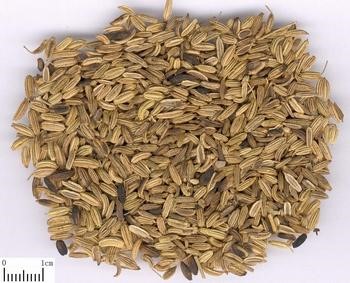| Function and treatment |
Dispersing cold and relieving pain, regulating Qi and harmonizing the stomach. Used for cold hernia and abdominal pain, testicular drop, dysmenorrhea, cold pain in the lower abdomen, distention and pain in the abdomen, diarrhea with little food, testicular sphincter effusion. Salt cumin warms the kidney, disperses cold and relieves pain. Used for cold hernia and abdominal pain, testicular drop, menstrual cold and abdominal pain. |
| Origin and best harvesting period |
Fennel fruit's main origin distribution:It is native to the Mediterranean region. It is cultivated all over China. It is mainly produced in Shanxi, Inner Mongolia, Gansu and Liaoning. Cumin is usually harvested in summer or autumn. If cumin is planted between March and April, then it is harvested in the summer, specifically between May and June. If cumin is planted between July and August, then cumin is harvested in the fall, specifically between September and October. |
